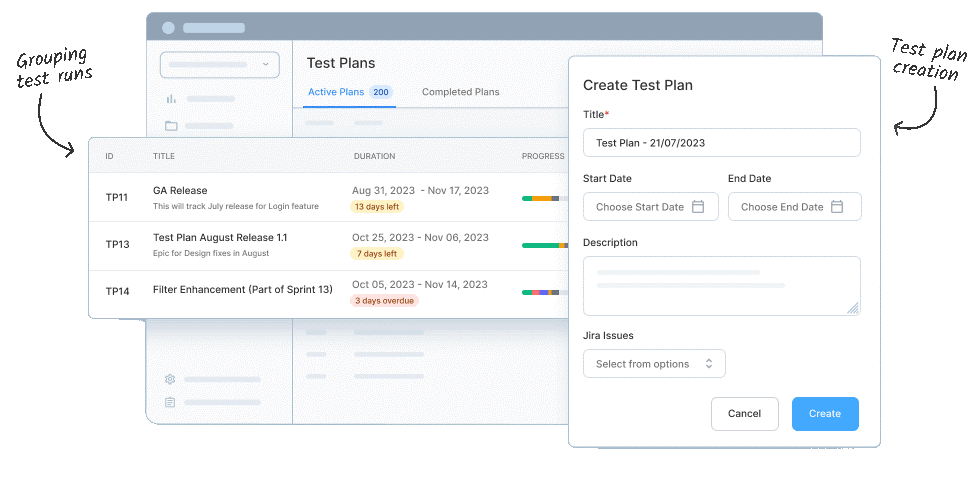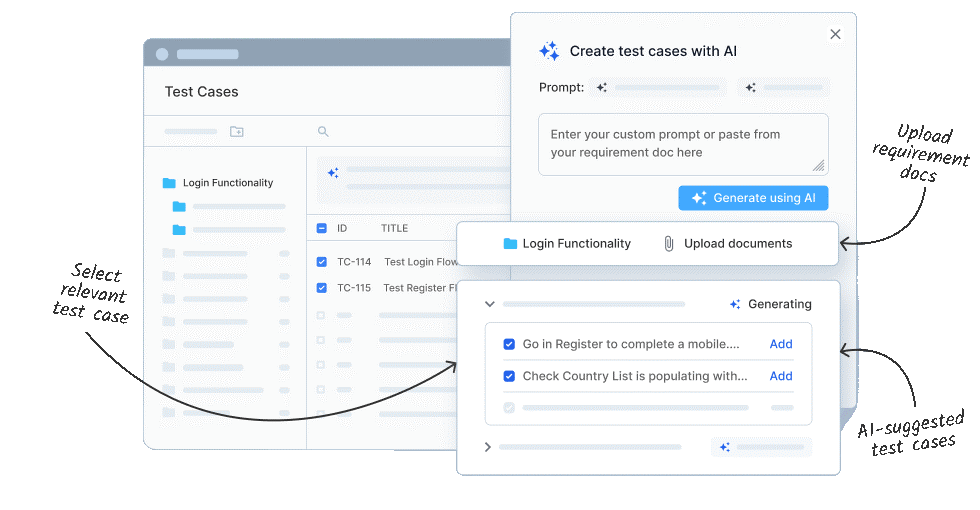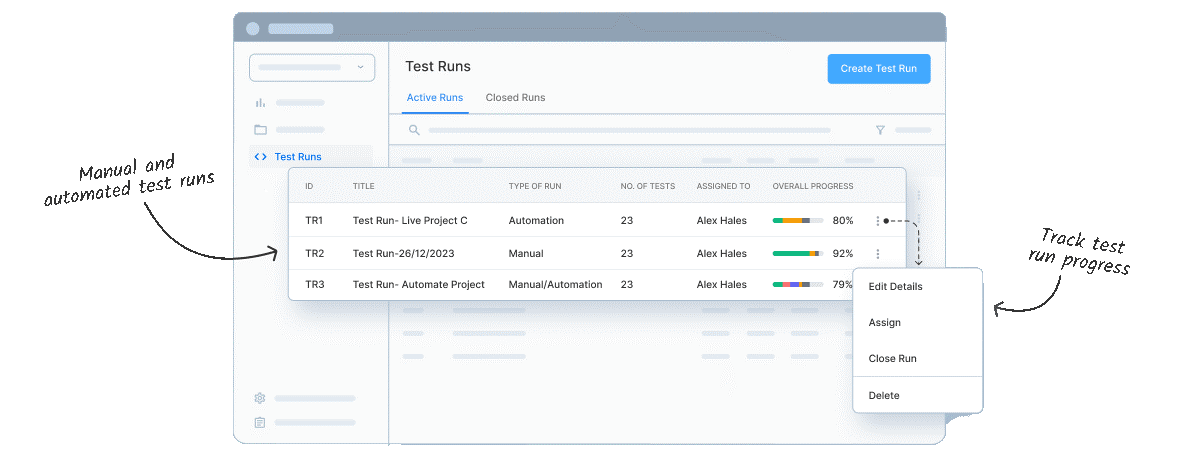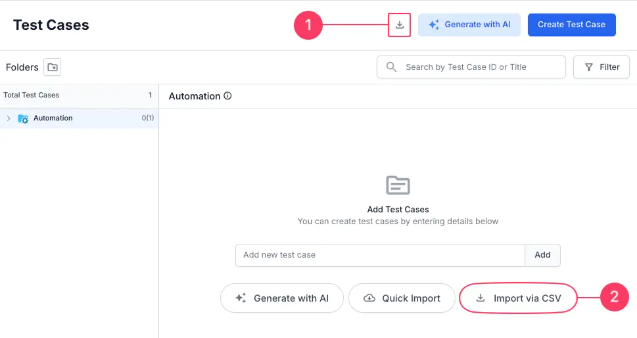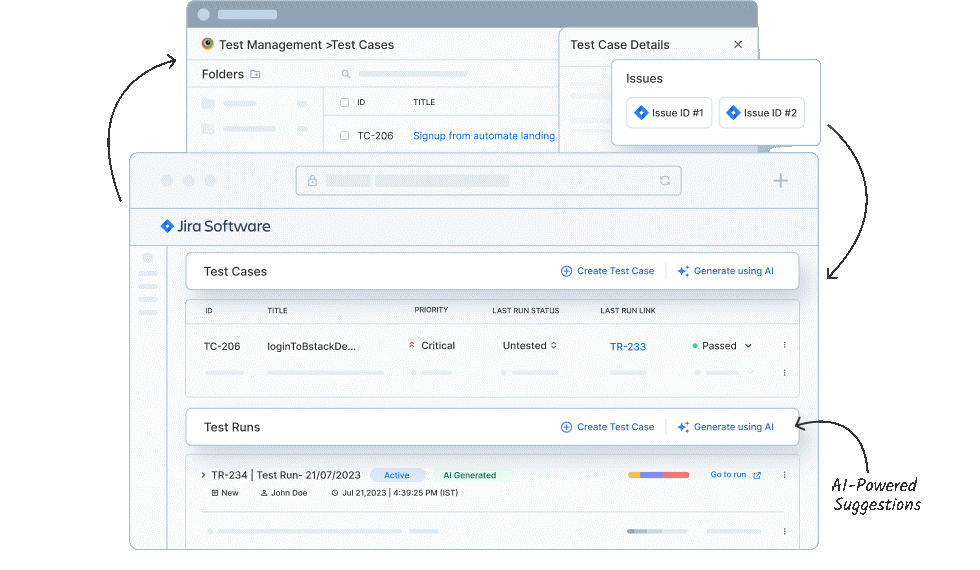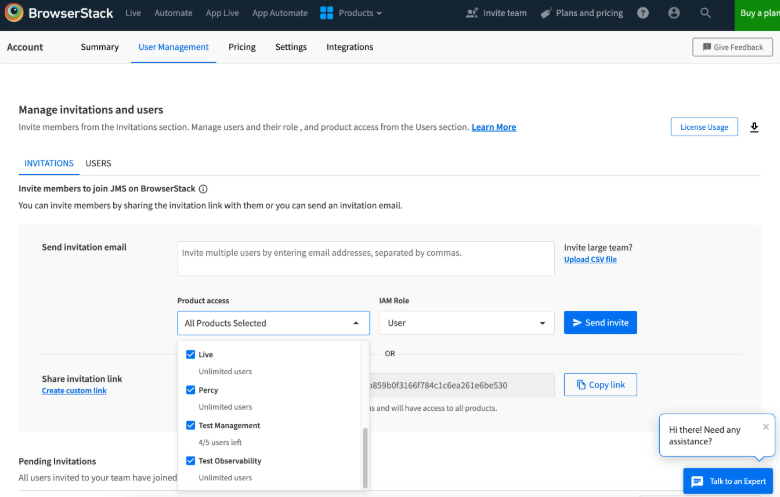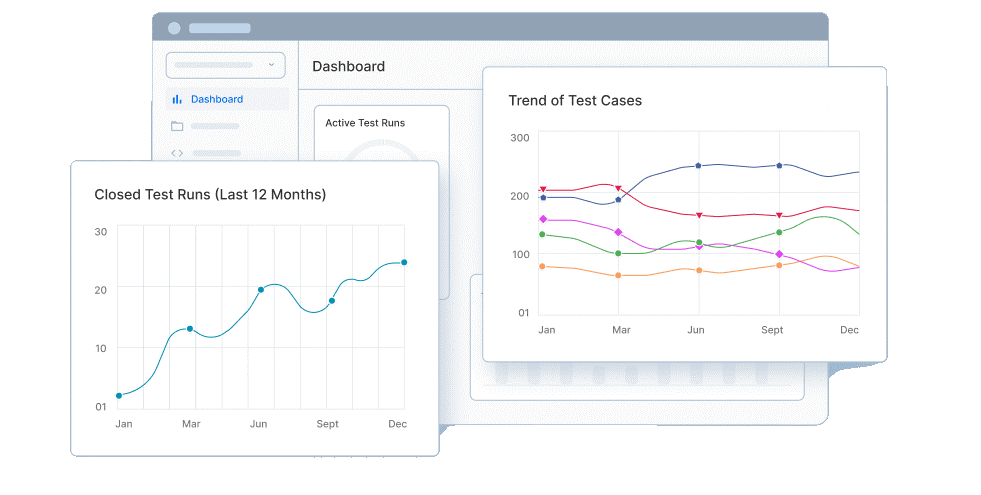Choosing the Best Test Management Tool: A Practical Guide
Test management tools help teams plan, execute, and track testing activities from start to finish. Whether you’re scaling a QA team or improving workflows—choosing the right test management tool can elevate your testing process.
This comprehensive guide describes the key features to consider in a test management tool, compares the top 10 tools and shares the lists of questions to ask before choosing a test management tool.
What are Test Management Tools?
Test Management Tools are software solutions that help teams plan, organize, execute, and track software testing activities throughout the development lifecycle. They provide a centralized platform to manage test cases, test execution, requirements, bugs, and reporting. These tools ensure better collaboration, traceability, and quality assurance.
One such example is the BrowserStack Test Management Tool, which provides a unified dashboard for complete test visibility and control.
Why Test Management Tools Matter?
Effective test management ensures structured, traceable, and collaborative testing. These tools:
- Help organize and manage test cases, runs, and results in one centralized platform
- Improve communication across QA, dev, and product teams
- Enable traceability between requirements, test cases, and defects
- Support both manual and automated testing workflows
- Reduce duplication and streamline repetitive tasks
- Provide real-time reporting and insights for better decision-making
- Scale easily with growing teams and complex testing needs
- Ensure consistency and quality across every stage of the release cycle
Key Features to consider in a Test Management Tool
When choosing a test management tool, it’s important to look for features that support your team’s workflow, enhance collaboration, and ensure test coverage.
Here are some key features to consider:
1. Centralized Repository
A centralized test repository helps teams store, organize, and manage all test cases in one location. This eliminates duplication, improves visibility, and strengthens traceability across the SDLC.
BrowserStack’s centralized test repository offers structured grouping and tagging of test cases for easy navigation and access. It provides real-time insights into linked test runs, requirements, and results, facilitating efficient collaboration.
This centralization is essential for scaling testing efforts across multiple teams and projects.
2. Test Planning
Effective test planning ensures structured execution and on-time releases. BrowserStack Test Management tool’s test planning features allow teams to define objectives, scope, resources, and priorities.
With intuitive test run assignments, assigning roles and setting schedules becomes effortless. Built-in calendars and tagging systems make it easier to group and manage test efforts. Clear planning also supports risk-based testing by mapping tests to critical requirements.
3. AI-Powered Test Creation and Management
AI-Powered Test Creation and Management helps teams accelerate testing by automatically generating test cases, suggesting optimizations, and reducing manual effort.
BrowserStack Test Management tool speeds up authoring with AI-assisted test creation. Teams can automatically generate relevant test steps based on requirements or past inputs, reducing manual effort.
4. Test Deduplication Agent
BrowserStack Test Management’s Test Deduplication Agent detects exact or semantically similar test cases across your repository. It provides intelligent recommendations for merging or removal to maintain a clean and efficient test suite.
5. Low-Code Test Execution and Intelligent Test Selection
Low-Code Automated Test Authoring quickly converts manual test cases into low-code automated tests to accelerate automation adoption.
The Intelligent Test Selection Agent uses AI to identify and recommend the most relevant tests for execution, optimizing test runs and focusing on critical test coverage.
6. Test Data Management
Effective Test Data Management (TDM) is crucial for organizing and executing software tests efficiently. It involves a smooth flow of information across projects, test cases, test runs, and test plans to ensure a streamlined testing process.
BrowserStack’s Test Management platform enhances TDM by offering a centralized system of test cases and test data. It helps teams manage resources, coordinate testing, and track progress in real-time.
7. Test Execution
Test Execution is used to validate that your application works as expected by running test cases against real environments. It helps teams identify bugs early, monitor test outcomes in real-time, and ensure consistent quality across builds.
BrowserStack supports seamless manual and automated test execution. Users can run tests across multiple environments, track pass/fail statuses, and manage assignments without switching tools.
Its execution dashboards offer real-time updates and defect-creation capabilities. Grouped executions and bulk actions make it easy to run large suites. Teams can re-run failed tests instantly, optimizing cycles.
Read More: What are Test Execution Tools?
8. Test Tracking & Traceability
Traceability helps link every test case to its corresponding requirement or defect. With BrowserStack’s traceability features, teams can monitor which requirements are tested, pending, or failed.
Bidirectional traceability reports assist in root cause analysis. Also, the built-in filters help users drill down by module, sprint, or status. BrowserStack’s historical traceability feature ensures continuous improvement and regression coverage.
9. Collaboration
Test management is a cross-functional process. A strong test management tool facilitates collaboration across QA, DevOps, and product teams.
BrowserStack enables shared dashboards, real-time test updates, and comment threads per test run. Notifications keep all stakeholders informed of changes. Centralized tagging and ownership assignment boost accountability. This collaborative environment leads to fewer blockers and faster feedback cycles.
10. Quick Import of Test Data
Quick Import of Test Data lets teams easily upload existing test cases and results, saving time and effort during setup or migration.
BrowserStack Test Management tool’s quick import capability simplifies data migration from TestRail, Zephyr, Xray, qTest, or CSV files. The platform supports automatic field mapping to BrowserStack’s system-defined fields, eliminating manual setup and reducing onboarding time.
It also allows users to define custom values, accommodating unique naming conventions and workflows used by QA teams. Data validation occurs before import, ensuring test integrity and consistency.
For detailed guidance, refer to the CSV import documentation.
11. Integrations
Integration capability connects your test management tool with Jira, CI/CD, and automation tools for a unified, efficient workflow.
BrowserStack Test Management offers powerful integrations across the SDLC, including two-way Jira binding, CI/CD tools, automation frameworks, and REST APIs. This ensures smooth collaboration, real-time updates, and efficient, traceable workflows.
12. Real-Time Reporting and Dashboards
Real-time reports and dashboards present test execution results, failure trends, and coverage insights in an intuitive format.
BrowserStack Test Management tool provides robust reporting and analytics features that help QA teams make informed decisions quickly. Traceability reports connect requirements, test cases, and defects to ensure complete testing coverage.
With customizable views, teams can track metrics that matter most to them and monitor project health at a glance.
13. Flexibility and Customization
No two QA teams work alike. An ideal test management tool allows custom fields, workflows, labels, and views.
BrowserStack enables teams to tailor test plans, case templates, and reporting formats to fit their needs. You can set up reusable test suites and define flexible run cycles. Custom roles and tagging enhance clarity. This flexibility increases adoption across departments and workflows.
14. User Access and Role Management
Role-based access ensures security and streamlined collaboration.
BrowserStack Test Management allows admins to define view/edit rights for teams, projects, or individuals. Different roles, such as Test Manager, Contributor, or Viewer, can be assigned.
Audit logs track who changed what and when. Role hierarchies reduce conflict and improve accountability. Its granular control ensures that only the right people can access sensitive data.
15. Scalability
As teams and projects grow, test management must scale without performance dips.
BrowserStack Test Management tool supports thousands of test cases, runs, and users across multiple projects.
Its architecture handles large datasets with minimal lag. Teams can clone test cycles and reuse test suites across sprints. The cloud-based infrastructure supports distributed teams. Scalability ensures long-term platform viability for startups and enterprises.
16. Simple Migration Paths
Simple Migration Paths make it easy to switch from existing test management tools by importing test cases, results, and related data with minimal setup.
BrowserStack’s quick import feature in the Test Management tool offers step-by-step migration from Excel, TestRail, or CSV. Auto-field mapping ensures accuracy. BrowserStack’s support team provides personalized onboarding.
Test case hierarchy and attachments are preserved. Migrating becomes a fast, low-friction process.
17. Bulk Edit of Test Cases
Updating test cases one by one wastes time. Bulk Edit of Test Cases allows teams to update multiple test cases at once, saving time, reducing manual effort, and ensuring consistency across test data.
BrowserStack allows bulk editing of fields, statuses, tags, and ownerships. Users can apply filters, select cases, and execute edits in seconds. This is especially useful during regression prep or requirement updates. Bulk actions also reduce errors in repetitive tasks. Time saved equals faster releases.
18. Reusability of Test Cases
Reusable components reduce redundancy and improve consistency. Reusability is key to scaling test libraries and standardizing QA practices.
BrowserStack Test Management supports shared steps that can be referenced across multiple test cases. Users can clone cases or groups across projects. Modular test design simplifies updates and reduces maintenance. 16. Insights & Analytics
Read More: Use Case vs Test Case: Core Differences
19. Insights and Analytics
Insights and Analytics provide real-time visibility into test performance, coverage, and trends. It helps teams make data-driven decisions and improve release quality.
BrowserStack Test Management’s reporting suite delivers comprehensive QA insights that go beyond test outcomes. It provides analytic insights like automation coverage, execution trends, failure patterns, and defect impact to optimize testing and drive continuous improvement.
20. Cost-Effectiveness
An effective test management tool should deliver value without overspending.
BrowserStack offers transparent pricing with enterprise-grade features included. Teams save on third-party plugins due to built-in integrations. Bulk user licensing and cloud hosting reduce IT overhead. Time-saving features like bulk edit and auto-import reduce manual effort. Overall, the ROI is high for teams seeking long-term scalability and usability.
BrowserStack Test Management’s free version provides unlimited test cases, strong integrations, and live reporting for efficient test management
Top Questions to ask before selecting a Test Management Tool
Here are some top questions to ask when selecting a Test Management tool to ensure it aligns with your team’s needs and workflows:
1. Does it support both manual and automated testing?
Can the tool manage test cases for both approaches and integrate with automation frameworks?
2. Is it easy to use and adopt across teams?
How intuitive is the user interface for testers, developers, and non-technical stakeholders?
3. Does it integrate with your existing tools?
Can it connect with issue trackers like Jira, CI/CD tools, and version control systems?
4. How flexible is the test case organization?
Can you group, tag, filter, and customize test cases for different projects?
5. Does it offer real-time reporting and analytics?
Are dashboards and insights available to track progress, coverage, and failures?
6. How scalable is the platform?
Will it support your team as it grows, or as test volume increases?
7. What kind of collaboration features does it offer?
Can multiple team members work together efficiently with roles, permissions, and notifications?
8. Is it cloud-based or on-premise?
Does the deployment model meet your organization’s security and infrastructure needs?
9. How secure is the tool?
Does it comply with your company’s data protection and compliance requirements?
10. What is the cost and licensing model?
Is the pricing transparent, flexible, and aligned with your team size and usage?
Read More: 11 Best Open Source Test Management Tools
Comparison of Top 10 Test Management Tools
Choosing the right test management tool starts with understanding the features that matter most. Here’s a comparison of the top 15 tools:
| Tool Name | Features | Pros | Cons | Pricing |
|---|---|---|---|---|
| BrowserStack Test Management | Central repository, AI-based test case generation, Jira two-way binding, quick import from other tools, automation, CI/CD integrations, and real-time dashboards | Unified platform, strong automation support, supports manual and automated testing, freemium model, strong integration, great analytics. | Not open-source | Freemium (up to 5 users), scalable pricing for teams and enterprises. |
| TestRail | Test Case Management, Reporting & Analytics, Jira Integration, GitHub Integration, Jenkins Integration, | Offers end-to-end test case creation, execution, and tracking, making it ideal for managing complex test cycles. | Costly, Limited Customization, Deep Learning Curve | Starting at $35.00 for 1 User Per Month |
| Zephyr | Test Case Management, Integration with Jira, Test Execution & Tracking, Reporting & Traceability | Allows integration with automation tools like Jenkins, Selenium, and Bamboo. | Complex Setup and Complex UI | Starting at USD 10.00 Per Month for 1-10 Users. |
| XRay | Test Case Management, Integration with Jira, Test Execution & Tracking, Reporting & Traceability | Fully integrates with Jira, making it easy to manage both issues and tests in one place. | Complex UI and Setup | Starting at USD 10.00 Per Month for 1-10 Users. |
| TestLink | Test case management, test plans, requirements, execution, bug tracking | Free, customizable, supports multiple projects | Outdated UI, complex setup, limited automation support | Free (open-source) |
| Testpad | Checklist-style tests, keyboard-friendly UI, issue tracker integration | Easy to use, flexible, affordable | Lacks advanced reporting, no automation support | From $49/month |
| TestBench | Test planning, coordination, monitoring, tool integration | Supports structured testing, reliable | Limited public info, unclear feature set | Custom pricing |
| TestMonitor | Requirements-based testing, issue tracking, reports, integrations | User-friendly, comprehensive features, good reporting | UI could be more modern, needs customization | Custom pricing |
| Testomat | Manual & automated testing, CI/CD, analytics, team collaboration | Modern UI, automation support, free plan | Steep learning curve, unclear on-prem pricing | Has a Free plan; Paid plan starts at $30/user/month |
| TestLodge | Test plans, case execution, bug tracker integration, reports | Simple UI, fixed pricing, integrations | Basic UI, lacks advanced features | From $34/month/user |
| Testiny | Test case management, execution, reporting, integrations | User-friendly, quick setup | Limited advanced features | Contact vendor |
| Kiwi TCMS | Test plans, execution, bug tracking, custom fields | Open-source, flexible, flat-rate option | Requires technical setup, older UI | Open source |
| Tuskr | Test cases, runs, scheduling, CI/CD, analytics | Modern UI, affordable, strong support | Some config needed, limited reviews | From $90 |
| HP Quality Center (ALM) | Enterprise-grade test management with full traceability and advanced reporting | End-to-end traceability, strong reporting | Steep learning curve, cannot export attachments with test cases | No Free trial. Contact support |
| TestArchitect | Keyword-driven test automation with modular, reusable components | Automation support, modern UI, easier to set up | Limited manual test management, not ideal for compliance-heavy projects | Free trial is available; contact support for pricing. |
Conclusion
Choosing the right test management tool can transform your QA process, aligning your team toward faster releases and higher software quality. While many tools offer specialized capabilities, a unified, AI-powered platform with smooth integrations and intuitive workflows is critical for modern teams.
BrowserStack Test Management is a powerful solution that streamlines every aspect of testing—from test case creation to execution and reporting. With deep integrations and unmatched usability, it empowers teams to ship high-quality software faster, with confidence.

